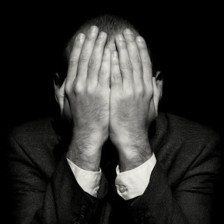Here is the exposure worksheet I adapted from Feeling Good about the Way You Look: A Program for Overcoming Body Image Problems.
I have included an example of a completed CBT exposure worksheet below as well.
I hope to complete some of these exercises on line over the next several weeks. If you happen upon this post feel free to do one of these exposure worksheets with me in the comments section. I will be happy to help.
Exposure Worksheet – Cognitive Behavioral Therapy for BDD
[scribd id=111975695 key=key-ksv4qwmk1z7pq36pjg8 mode=scroll]
Completed Exposure Worksheet Sample – Cognitive Behavioral Therapy for BDD
[scribd id=112129102 key=key-2e9krmhoedbx4ygbyeke mode=scroll]
I you haven’t already, please read and follow the guidelines from Feeling Good about the Way You Look: A Program for Overcoming Body Image Problems.
It is an amazing book that I recommend along with counseling. It may work well alone if you are highly motivated and organized!
